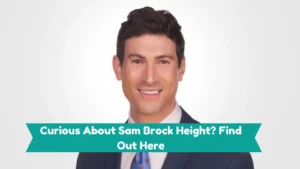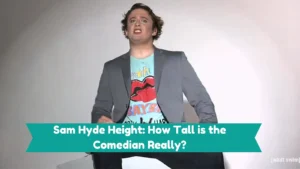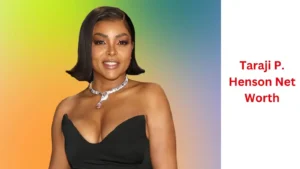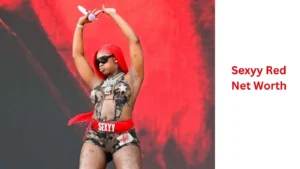Receiving a compliment at work can instantly brighten your day. Whether it’s your outfit, your energy, or just the way you carry yourself, being told You look good is always a nice ego boost.
But how you respond to such compliments can make a big difference. Your response could either encourage further positivity or make the moment feel a little awkward.
In this article, we’ll explore 30+ creative and thoughtful replies to the compliment, You look good, that are sure to make your colleague smile and foster a positive atmosphere in the workplace.
Thanks, you’re looking pretty sharp yourself!
This is a great response because it acknowledges the compliment while also returning one. Mutual compliments help build rapport and create a positive vibe in the workplace. By pointing out something you genuinely admire about your colleague’s appearance, you’re reinforcing the idea that compliments are a two-way street. Plus, it keeps the conversation going on a light and friendly note.
For example:
Colleague: You look good today!
You: Thanks, you’re looking pretty sharp yourself! That color really suits you.
Explanation:
This approach is also a gentle way to keep the exchange balanced, ensuring that neither party feels awkward or overly flattered.
I appreciate that! I was actually unsure about this outfit.
Being humble and showing a bit of vulnerability can make your response even more endearing. It shows that you’re approachable and human, which can help strengthen your connection with your colleague. This kind of reply invites a more extended conversation and can often lead to a fun exchange about fashion or personal style.
For example:
Colleague: You look good today!
You: I appreciate that! I was actually unsure about this outfit, but now I’m glad I wore it.
Explanation:
This kind of response can also make the compliment feel more genuine because it shows that you value their opinion.
You just made my day! Thank you.
A simple and sincere response like this one shows that you’re genuinely touched by the compliment. It not only acknowledges the compliment but also expresses gratitude, making the other person feel good about having said something nice to you.
For example:
Colleague: You look good today!
You: You just made my day! Thank you.
Explanation:
This type of response is short, sweet, and very effective at creating a positive interaction.
Wow, that means a lot coming from you!
When you tell someone that their compliment holds special value, it adds an extra layer of sincerity to your response. This is particularly effective if the compliment comes from someone you respect or admire at work. It’s a subtle way of acknowledging their good taste or sense of style, which can make them feel just as good as you do.
For example:
Colleague: You look good today!
You: Wow, that means a lot coming from you!
Explanation:
This response can also serve to strengthen your professional relationship by adding a touch of personal respect.
I’m trying to keep up with your style!
This is a playful response that not only acknowledges the compliment but also turns it into a fun and light-hearted exchange. By implying that you’re inspired by your colleague’s style, you give them a compliment in return, which can make the conversation feel more balanced and enjoyable.
For example:
Colleague: You look good today!
You: I’m trying to keep up with your style! You always look so put-together.
Explanation:
This kind of reply can foster a positive, friendly work environment where compliments are freely exchanged and appreciated.
Thanks! I felt like dressing up a bit today.
Sometimes, a straightforward and honest response is the best way to go. This reply acknowledges the compliment while also giving a bit of context. It shows that you put some thought into your appearance, which can make the compliment feel even more deserved.
For example:
Colleague: You look good today!
You: Thanks! I felt like dressing up a bit today. It’s nice to switch things up sometimes.
Explanation:
This response can also lead to further conversation about fashion, style, or even just how you’re feeling that day.
I owe it to a good night’s sleep!
Injecting a bit of humor into your response can make the interaction more enjoyable for both you and your colleague. By attributing your good looks to something like a good night’s sleep, you’re keeping the tone light and making the compliment feel more casual.
For example:
Colleague: You look good today!
You: I owe it to a good night’s sleep! I should try that more often.
Explanation:
This kind of response can also make your colleague smile, which is always a bonus.
Thanks! I’m loving how this color makes me feel.
This response is both positive and self-affirming. It acknowledges the compliment while also highlighting something specific that you like about your appearance. By sharing what makes you feel good, you’re opening up a bit more and making the interaction feel more personal.
For example:
Colleague: You look good today!
You: Thanks! I’m loving how this color makes me feel. It’s amazing what a pop of color can do.
Explanation:
This type of reply can also lead to a discussion about fashion, colors, and how different styles can affect our mood.
I think it’s the coffee kicking in!
This is another light-hearted and humorous response that can keep the mood fun and relaxed. By jokingly attributing your appearance to something like caffeine, you’re making the compliment feel more casual and less formal, which can be especially useful in a workplace setting.
For example:
Colleague: You look good today!
You: I think it’s the coffee kicking in! It’s amazing what a little caffeine can do.
Explanation:
This kind of response is likely to make your colleague chuckle and keep the conversation going in a positive direction.
You’re too kind! You always know how to make someone’s day.
This response not only acknowledges the compliment but also praises your colleague for being kind and thoughtful. It’s a great way to keep the positivity flowing and ensure that the compliment-giver feels good about their gesture.
For example:
Colleague: You look good today!
You: You’re too kind! You always know how to make someone’s day.
Explanation:
This response can also help to strengthen your relationship by showing that you appreciate their positive energy.
Thanks, I was inspired by your style!
Turning the compliment back to your colleague in this way is a great way to create a mutual admiration society. It’s also a good opportunity to give credit where credit is due if your colleague’s style has indeed influenced yours.
For example:
Colleague: You look good today!
You: Thanks, I was inspired by your style! You always have such great taste.
Explanation:
This reply helps build camaraderie and can lead to fun conversations about fashion and style.
I think it’s the lighting in here!
Sometimes, a humorous deflection can be the perfect way to respond to a compliment. By attributing your good looks to something like the lighting, you keep the tone light and fun while still acknowledging the compliment.
For example:
Colleague: You look good today!
You: I think it’s the lighting in here! It’s doing wonders for everyone.
Explanation:
This type of response is great for keeping the conversation casual and enjoyable.
I feel great today, and it’s showing!
This response is both positive and self-assured. It not only acknowledges the compliment but also shares a bit about how you’re feeling, which can make the interaction feel more personal and genuine.
For example:
Colleague: You look good today!
You: I feel great today, and it’s showing! Thanks for noticing.
Explanation:
This reply is also a good way to keep the conversation going in a positive direction, potentially leading to a discussion about what’s making you feel so great.
Thank you! I think it’s the new haircut.
If you’ve recently made a change to your appearance, like a new haircut, this response is a great way to highlight that. It acknowledges the compliment while also giving your colleague a bit more context about what’s different.
For example:
Colleague: You look good today!
You: Thank you! I think it’s the new haircut. I’m glad you noticed!
Explanation:
This reply can also lead to further conversation about your new look and maybe even a few more compliments.
You’re making me blush! Thank you.
This response is both humble and appreciative. It acknowledges the compliment while also showing that you’re a bit bashful about it, which can make the interaction feel more endearing.
For example:
Colleague: You look good today!
You: You’re making me blush! Thank you.
Explanation:
This kind of reply is short, sweet, and likely to make both you and your colleague smile.
Thanks, I’m channeling my inner confidence today!
This response is a great way to highlight the importance of confidence in how we present ourselves. It acknowledges the compliment while also sharing a bit about your mindset, which can make the interaction feel more meaningful.
For example:
Colleague: You look good today!
You: Thanks, I’m channeling my inner confidence today! It’s amazing what a little self-belief can do.
Explanation:
This reply can also inspire your colleague to think about how they can boost their own confidence.
You always know how to lift someone’s spirits!
This response is a great way to praise your colleague for their kindness and thoughtfulness. It acknowledges the compliment while also making the other person feel good about having said something nice.
For example:
Colleague: You look good today!
You: You always know how to lift someone’s spirits! Thank you.
Explanation:
This kind of reply is likely to leave both you and your colleague feeling positive and uplifted.
Thanks, I’m trying out a new look!
If you’ve recently made a change to your style or appearance, this response is a great way to highlight that. It acknowledges the compliment while also giving your colleague a bit more context about what’s different.
For example:
Colleague: You look good today!
You: Thanks, I’m trying out a new look! I’m glad you like it.
Explanation:
This reply can also lead to further conversation about your new style and maybe even a few more compliments.
You’re too sweet! You always know how to make someone’s day.
This response not only acknowledges the compliment but also praises your colleague for being kind and thoughtful. It’s a great way to keep the positivity flowing and ensure that the compliment-giver feels good about their gesture.
For example:
Colleague: You look good today!
You: You’re too sweet! You always know how to make someone’s day.
Explanation:
This response can also help to strengthen your relationship by showing that you appreciate their positive energy.
Thanks! I’m really happy with how everything came together today.
This response is both positive and self-assured. It acknowledges the compliment while also sharing a bit about how you’re feeling, which can make the interaction feel more personal and genuine.
For example:
Colleague: You look good today!
You: Thanks! I’m really happy with how everything came together today.
Explanation:
This reply is also a good way to keep the conversation going in a positive direction, potentially leading to a discussion about what’s making you feel so great.
I appreciate that! I was actually a bit unsure about this outfit.
Being humble and showing a bit of vulnerability can make your response even more endearing. It shows that you’re approachable and human, which can help strengthen your connection with your colleague.
For example:
Colleague: You look good today!
You: I appreciate that! I was actually a bit unsure about this outfit, but now I’m glad I wore it.
Explanation:
This kind of response can also make the compliment feel more genuine because it shows that you value their opinion.
Thank you! I’m really embracing this new style.
If you’ve recently made a change to your style or appearance, this response is a great way to highlight that. It acknowledges the compliment while also giving your colleague a bit more context about what’s different.
For example:
Colleague: You look good today!
You: Thank you! I’m really embracing this new style. It’s been fun to try something different.
Explanation:
This reply can also lead to further conversation about your new look and maybe even a few more compliments.
I think it’s the smile! It’s amazing what a good mood can do.
This response is both positive and self-affirming. It acknowledges the compliment while also highlighting something specific that you like about your appearance.
For example:
Colleague: You look good today!
You: I think it’s the smile! It’s amazing what a good mood can do.
Explanation:
This type of reply can also lead to a discussion about the power of positivity and how it affects our appearance.
You’re making me blush! But thank you, that means a lot.
This response is both humble and appreciative. It acknowledges the compliment while also showing that you’re a bit bashful about it, which can make the interaction feel more endearing.
For example:
Colleague: You look good today!
You: You’re making me blush! But thank you, that means a lot.
Explanation:
This kind of reply is short, sweet, and likely to make both you and your colleague smile.
Thanks! I’ve been working on my style lately.
If you’ve been putting extra effort into your appearance, this response is a great way to highlight that. It acknowledges the compliment while also giving your colleague a bit more context about what’s different.
For example:
Colleague: You look good today!
You: Thanks! I’ve been working on my style lately, so it’s great to hear that you like it.
Explanation:
This reply can also lead to further conversation about your new look and maybe even a few more compliments.
Thank you! I think it’s the new accessories.
If you’ve recently added some new accessories to your look, this response is a great way to highlight that. It acknowledges the compliment while also giving your colleague a bit more context about what’s different.
For example:
Colleague: You look good today!
You: Thank you! I think it’s the new accessories. They’ve been a fun addition to my wardrobe.
Explanation:
This reply can also lead to further conversation about your new style and maybe even a few more compliments.
I appreciate that! I’m trying out a new look.
If you’ve recently made a change to your style or appearance, this response is a great way to highlight that. It acknowledges the compliment while also giving your colleague a bit more context about what’s different.
For example:
Colleague: You look good today!
You: I appreciate that! I’m trying out a new look, and it’s been fun to experiment.
Explanation:
This reply can also lead to further conversation about your new style and maybe even a few more compliments.
You’re too kind! It’s amazing what a little confidence can do.
This response is a great way to highlight the importance of confidence in how we present ourselves. It acknowledges the compliment while also sharing a bit about your mindset, which can make the interaction feel more meaningful.
For example:
Colleague: You look good today!
You: You’re too kind! It’s amazing what a little confidence can do.
Explanation:
This reply can also inspire your colleague to think about how they can boost their own confidence.
Thank you! I’m really enjoying this new style.
If you’ve recently made a change to your style or appearance, this response is a great way to highlight that. It acknowledges the compliment while also giving your colleague a bit more context about what’s different.
For example:
Colleague: You look good today!
You: Thank you! I’m really enjoying this new style. It’s been a fun change.
Explanation:
This reply can also lead to further conversation about your new look and maybe even a few more compliments.
I think it’s the positive energy! It’s amazing what a good mood can do.
This response is both positive and self-affirming. It acknowledges the compliment while also highlighting something specific that you like about your appearance.
For example:
Colleague: You look good today!
You: I think it’s the positive energy! It’s amazing what a good mood can do.
Explanation:
This type of reply can also lead to a discussion about the power of positivity and how it affects our appearance.
Conclusion
Responding to compliments in a thoughtful and creative way can help build stronger relationships with your colleagues and foster a positive work environment.
Whether you choose to return the compliment, inject a bit of humor, or share something about your personal style, your response can make the interaction more enjoyable for both you and the compliment-giver.
By being mindful of your replies, you can turn a simple You look good into an opportunity for connection, positivity, and maybe even a little fun.
So the next time someone tells you that you look good, you’ll have plenty of options for how to respond in a way that makes both you and your colleague smile.

Matthew Porter is the visionary behind ReplySwift.com. With a talent for crafting concise and impactful responses, Matthew helps others communicate with clarity and confidence. On ReplySwift.com, he provides expert advice, practical templates, and valuable insights to enhance every reply. Join Matthew and transform your communication skills to make each response swift and effective.












